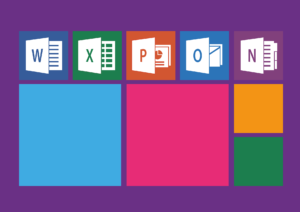Microsoft Word Tutorial for Beginners: Master the Basics and Beyond
Embark on a comprehensive journey to master Microsoft Word 2019 with our beginner tutorial. Whether you’re a student, professional, or simply looking to enhance your word processing skills, this tutorial will equip you with the knowledge and tools needed to create professional documents efficiently. Starting with an introduction to Word 2019, you’ll learn about its interface and understand why it’s a valuable skill to possess in today’s digital age. From there, you’ll dive into essential tasks such as opening Word, navigating the user interface, and customizing toolbars to suit your workflow.
As you progress, you’ll master fundamental text editing techniques, including typing, selecting, copying, cutting, and pasting text. You’ll then explore formatting text to make it stand out with different fonts, sizes, styles, and colors. Additionally, you’ll learn how to format paragraphs, create lists, and work with styles to maintain consistency throughout your documents. Enhancing the visual appeal of your documents, you’ll discover how to insert, resize, position, and format images. You’ll also learn about page layout options, including adjusting margins, setting page orientation, and adding headers and footers.
Proofing and reviewing tools will become your allies as you learn how to check spelling and grammar, find synonyms, track changes, and review comments. You’ll also explore how to save documents, print them, and export them in different formats to share with others.
By the end of this tutorial, you’ll have gained a solid understanding of Word 2019’s basic features and be well-equipped to tackle more advanced tasks. Whether you’re writing essays, reports, or business documents, you’ll have the skills and confidence to create professional-looking documents efficiently and effectively. Get ready to unleash your creativity and productivity with Word 2019!
Table of Contents
- Introduction to Word 2019
- What is Word 2019?
- Why Learn Word 2019?
- Opening Word 2019
- Exploring the User Interface
- Understanding the Ribbon
- Customizing the Quick Access Toolbar
- Basic Text Editing
- Typing and Deleting Text
- Selecting Text
- Copying, Cutting, and Pasting Text
- Using Undo and Redo
- Formatting Text
- Changing Font Styles and Sizes
- Applying Bold, Italic, and Underline
- Adjusting Text Alignment
- Changing Text Color and Highlight
- Paragraph Formatting
- Indenting Paragraphs
- Adjusting Line Spacing
- Using Bullets and Numbering
- Creating and Formatting Lists
- Working with Styles
- Understanding Styles
- Applying Built-in Styles
- Creating Custom Styles
- Modifying Styles
- Working with Images
- Inserting Images
- Resizing and Positioning Images
- Adding Captions to Images
- Wrapping Text Around Images
- Page Layout
- Adjusting Margins
- Setting Page Orientation
- Adding Page Numbers
- Inserting Headers and Footers
- Proofing and Reviewing
- Checking Spelling and Grammar
- Using the Thesaurus
- Tracking Changes
- Reviewing Comments
- Saving and Printing
- Saving Documents
- Printing Documents
- Exporting Documents in Different Formats
- Conclusion
- Recap and Next Steps
- Additional Resources
- Tips and Tricks
Microsoft Word Tutorial: Introduction
To begin using Word 2019, you’ll first need to open the application. Depending on your operating system, the process varies slightly:
- For Windows Users:
- Click on the Start button, usually located at the bottom-left corner of your screen.
- In the search bar, type “Word 2019”.
- Look for the Microsoft Word 2019 application icon in the search results and click on it to open the program.
- For macOS Users:
- Navigate to the Applications folder, which you can find in the Finder.
- Scroll through the list of applications until you find “Microsoft Word”.
- Double-click on the Microsoft Word icon to launch the application.
By following these steps, you’ll successfully open Word 2019 and be ready to start creating and editing documents.
- Exploring the User Interface:
Once Word 2019 is open, you will encounter the user interface, which consists of several essential components:
- Ribbon:
- Located at the top of the window, the ribbon is a wide band that organizes Word’s features into tabs.
- Tabs include Home, Insert, Design, Layout, and more, each containing groups of related commands for various tasks.
- For instance, the Home tab contains tools for text formatting, such as font selection, text alignment, and paragraph settings.
- Quick Access Toolbar:
- Situated above the ribbon, this toolbar offers one-click access to frequently used commands.
- Common commands include Save, Undo, and Redo.
- You can customize this toolbar to include other commands that you use often.
- Document Area:
- The main workspace where you will create, edit, and format your document.
- This area is beneath the ribbon and is where you will type text, insert images, and apply formatting.
- The document area is flexible, allowing you to zoom in and out to view your content at different scales.
- Status Bar:
- Located at the bottom of the window, the status bar provides information about your document.
- It shows the current page number, total word count, and the zoom level.
- The status bar also includes useful tools like the view options and a word count toggle.
- Understanding the Ribbon:
The ribbon in Word 2019 is divided into tabs, each serving a distinct purpose. Here’s a closer look at some of the most commonly used tabs and their functionalities:
- Home Tab:
- This tab is focused on basic text formatting and editing tools.
- Commands include setting the font style and size, applying bold, italic, and underline formatting, adjusting text alignment (left, center, right), and managing paragraph spacing.
- Insert Tab:
- Allows you to enhance your document by inserting various elements.
- You can add tables, pictures, shapes, hyperlinks, headers, footers, and more.
- This tab is essential for creating rich, multimedia documents.
- Design Tab:
- Provides tools to change the overall look and feel of your document.
- Includes themes, colors, fonts, and effects to give your document a professional appearance.
- You can quickly apply pre-designed styles to ensure consistency throughout your document.
- Layout Tab:
- Offers options to adjust the layout and structure of your document.
- You can set margins, change the page orientation (portrait or landscape), specify the paper size, and manage columns and spacing.
- This tab is useful for formatting documents to meet specific print or presentation requirements.
- References Tab:
- Contains tools for managing citations and bibliographies.
- You can insert footnotes, endnotes, and create a table of contents.
- This tab is particularly useful for academic and research documents where proper referencing is crucial.
- Customizing the Quick Access Toolbar:
The Quick Access Toolbar can be tailored to suit your workflow, providing immediate access to the commands you use most frequently. To customize this toolbar:
- Click on the small down arrow at the end of the Quick Access Toolbar.
- From the dropdown menu, select the commands you want to add by clicking on them. They will be added to the toolbar immediately.
- If you want to remove a command, click on it again in the dropdown menu.
- For more extensive customization, click on “More Commands…” at the bottom of the dropdown menu.
- In the dialog box that appears, you can choose commands from a more comprehensive list and arrange them in your preferred order.
- Click OK to save your changes and update the Quick Access Toolbar.
By customizing the Quick Access Toolbar, you can streamline your workflow and increase your productivity by having your most-used commands readily available.
Microsoft Word Tutorial for Beginners – Part 2: Basic Text Editing
In this part of the tutorial, we’ll explore essential text editing techniques in Word 2019. From typing and deleting text to selecting, copying, cutting, and pasting, mastering these skills will allow you to efficiently manipulate text within your documents.
1. Typing and Deleting Text: Typing and deleting text are fundamental actions in Word. Let’s learn how to perform these tasks:
- Typing Text: Simply click into the document area and start typing. Your text will appear where the cursor is positioned.
- Deleting Text: If you need to remove text, place the cursor at the end of the text you want to delete and press the Backspace key to delete text to the left or the Delete key to delete text to the right.
2. Selecting Text: Selecting text is crucial for formatting, copying, cutting, or deleting large chunks of text. Here’s how to do it:
- Click at the beginning of the text you want to select.
- Hold down the left mouse button and drag the cursor to the end of the text.
- Alternatively, double-click on a word to select it, or triple-click to select a paragraph.
3. Copying, Cutting, and Pasting Text: Copying, cutting, and pasting text allow you to duplicate, move, or insert text within your document. Follow these steps:
- Select the text you want to copy or cut.
- To copy, right-click on the selected text and choose “Copy.” To cut, choose “Cut.”
- Place your cursor where you want to paste the text and right-click. Select “Paste” to insert the copied or cut text.
4. Using Undo and Redo: Mistakes are inevitable, but Word makes it easy to correct them. Here’s how to use the Undo and Redo functions:
- To undo your last action, press Ctrl + Z on your keyboard or click the Undo button on the Quick Access Toolbar.
- To redo an action that you’ve undone, press Ctrl + Y or click the Redo button on the Quick Access Toolbar.
Microsoft Word Tutorial for Beginners Part 3: Formatting Text
Welcome to Part 3 of our Word 2019 Beginner Tutorial! In this section, we’ll delve into the exciting world of text formatting. Whether you want to make your text stand out with different fonts and colors or align it just right, we’ll cover everything you need to know to create visually appealing documents.
1. Changing Font Styles and Sizes: Fonts and sizes play a significant role in the appearance of your text. Here’s how to change them:
- Selecting Text: Before changing the font or size, select the text you want to modify.
- Font Styles: In the Home tab, locate the Font group. Use the Font drop-down menu to choose a font style from the list.
- Font Sizes: Next to the Font drop-down menu, you’ll find the Font Size drop-down menu. Select a size from the list, or type in a specific size.
2. Applying Bold, Italic, and Underline: Adding emphasis to your text is easy with the bold, italic, and underline features:
- Bold: Select the text you want to make bold, then click the Bold button in the Font group on the Home tab, or press Ctrl + B.
- Italic: Similarly, select the text and click the Italic button in the Font group, or press Ctrl + I.
- Underline: Select the text and click the Underline button, or press Ctrl + U.
3. Adjusting Text Alignment: Aligning your text properly can improve readability and aesthetics. Here’s how to do it:
- Left Alignment: Click the Align Left button in the Paragraph group on the Home tab, or press Ctrl + L.
- Center Alignment: Click the Center button, or press Ctrl + E.
- Right Alignment: Click the Align Right button, or press Ctrl + R.
- Justify Alignment: Click the Justify button to align text to both the left and right margins.
4. Changing Text Color and Highlight: Adding color or highlight to your text can make it more visually appealing. Here’s how:
- Text Color: Select the text, then click the Font Color button in the Font group to choose a color.
- Highlight Color: Similarly, select the text and click the Text Highlight Color button to apply a background color.
Microsoft Word Tutorial for Beginners – Part 4: Paragraph Formatting
Welcome to Part 4 of our Word 2019 Beginner Tutorial! In this section, we’ll dive into paragraph formatting, which allows you to structure your text effectively. Whether you need to adjust indentation, line spacing, or create lists, we’ll cover everything you need to know to make your documents look professional and organized.
1. Indenting Paragraphs: Indenting paragraphs helps to visually separate text and indicate new sections. Here’s how to do it:
- First Line Indent: Click anywhere in the paragraph you want to indent. Then, on the Home tab, in the Paragraph group, click the Increase Indent button.
- Hanging Indent: For hanging indents (commonly used in reference lists or bibliographies), select the text, click the dialog box launcher in the Paragraph group, and adjust the Special drop-down menu to “Hanging.”
2. Adjusting Line Spacing: Line spacing affects the amount of space between lines of text. Here’s how to adjust it:
- Single Spacing: By default, Word uses single line spacing. To change it, select the text, click the Line and Paragraph Spacing button in the Paragraph group, and choose “1.0” from the menu.
- Double Spacing: For double spacing, choose “2.0” from the same menu.
3. Using Bullets and Numbering: Bullets and numbering are great for creating lists and organizing information. Here’s how to use them:
- Bullets: Click the Bullets button in the Paragraph group to add bullets to a list. You can choose from various bullet styles.
- Numbering: Similarly, click the Numbering button to add numbers or letters to a list. Again, you can choose different numbering formats.
4. Creating and Formatting Lists: In addition to bullets and numbering, Word offers various list formats. Here’s how to create and format lists:
- Multilevel Lists: Click the Multilevel List button in the Paragraph group to create a list with multiple levels of indentation.
- List Styles: You can customize the appearance of lists by right-clicking on a list item and choosing “Define New List Style.”
Microsoft Word Tutorial for Beginners – Part 5: Working with Styles
Welcome to Part 5 of our Word 2019 Beginner Tutorial! In this section, we’ll delve into the world of styles, which are sets of formatting characteristics that can be applied to text and paragraphs. Using styles not only ensures consistency throughout your document but also makes it easier to update formatting quickly. Let’s get started!
1. Understanding Styles: Styles in Word are collections of formatting settings that can be applied to text and paragraphs. They include font attributes, paragraph spacing, indentation, and more. Understanding how styles work is essential for maintaining consistency and efficiency in your documents.
2. Applying Built-in Styles: Word comes with a variety of built-in styles that you can apply to your text with just a few clicks. Here’s how to do it:
- Select the text or paragraph you want to format.
- Go to the Home tab, locate the Styles group, and click the Styles Gallery button.
- Choose a style from the gallery by clicking on it. The selected text will be formatted according to the chosen style.
3. Creating Custom Styles: If you have specific formatting requirements that aren’t covered by the built-in styles, you can create your own custom styles. Here’s how:
- Format a piece of text or paragraph the way you want it to appear.
- Select the formatted text.
- Go to the Home tab, Styles group, and click the “New Style” button.
- In the Create New Style from Formatting dialog box, give your style a name and click “OK” to save it.
4. Modifying Styles: Once you’ve created a custom style, you can easily modify it to suit your needs. Here’s how to do it:
- Select the text or paragraph that has the style applied.
- Right-click on the style name in the Styles Gallery and choose “Modify.”
- In the Modify Style dialog box, make the desired changes to the formatting options, and click “OK” to apply them.
5. Managing Styles: Word allows you to manage your styles efficiently, including organizing, renaming, and deleting them. Here’s how:
- Go to the Home tab, Styles group, and click the “Manage Styles” button.
- In the Styles pane that appears, you can organize styles into categories, rename them, and delete unused styles.
Microsoft Word Tutorial for Beginners – Part 6: Working with Images
Welcome to Part 6 of our Word 2019 Beginner Tutorial! In this section, we’ll explore how to enhance your documents by adding and formatting images. Images can help illustrate your points, break up text, and make your documents more visually appealing. Let’s dive in!
1. Inserting Images: Adding images to your Word document is a great way to enhance its visual appeal. Here’s how to insert images:
- Place your cursor where you want the image to appear.
- Go to the Insert tab and click on the “Pictures” button.
- Browse to the location of the image file on your computer, select it, and click “Insert.”
2. Resizing and Positioning Images: After inserting an image, you may need to resize or reposition it. Here’s how:
- Click on the image to select it.
- You’ll see handles appear around the image. Click and drag one of these handles to resize the image.
- To move the image, click and drag it to the desired location within your document.
3. Adding Captions to Images: Captions provide context for your images and help readers understand their relevance. Here’s how to add captions:
- Click on the image to select it.
- Go to the References tab and click on the “Insert Caption” button.
- In the Caption dialog box, enter your caption text and choose whether you want it to appear above or below the image. Click “OK” to insert the caption.
4. Wrapping Text Around Images: In some cases, you may want text to flow around an image rather than being blocked by it. Here’s how to wrap text around images:
- Click on the image to select it.
- Go to the Layout Options button that appears next to the image (it looks like a small square with text wrapping options).
- Choose the desired text wrapping option from the menu, such as “Square,” “Tight,” or “Behind Text.”
5. Formatting Images: Word offers various formatting options to enhance your images. Here are some common formatting options:
- To access image formatting options, right-click on the image and choose “Format Picture” from the context menu.
- In the Format Picture pane, you can adjust properties such as brightness, contrast, and transparency, as well as apply artistic effects and borders.
Microsoft Word Tutorial for Beginners – Part 7: Working with Images
Introduction: Welcome to Part 7 of our Word 2019 Beginner Tutorial! In this section, we’ll explore page layout options, which allow you to control the appearance and formatting of your document pages. Whether you need to adjust margins, set page orientation, or add headers and footers, we’ll cover everything you need to know to create professional-looking documents.
1. Adjusting Margins: Margins are the blank spaces around the edges of your document pages. Here’s how to adjust them:
- Go to the Layout tab and click on the “Margins” button.
- Choose one of the predefined margin options from the menu, such as Normal, Narrow, or Wide. Alternatively, select “Custom Margins” to set your own margin measurements.
2. Setting Page Orientation: Page orientation refers to the direction in which your document is displayed—portrait (vertical) or landscape (horizontal). Here’s how to change it:
- Go to the Layout tab and click on the “Orientation” button.
- Choose either “Portrait” or “Landscape” from the menu.
3. Adding Page Numbers: Page numbers help readers navigate through your document. Here’s how to add them:
- Go to the Insert tab and click on the “Page Number” button.
- Choose where you want the page numbers to appear—in the header or footer—and select a predefined format from the menu. You can also choose “Format Page Numbers” to customize the appearance further.
4. Inserting Headers and Footers: Headers and footers are areas at the top and bottom of each page where you can add text, images, or page numbers. Here’s how to insert them:
- Go to the Insert tab and click on the “Header” or “Footer” button.
- Choose one of the built-in header or footer designs from the menu, or select “Edit Header” or “Edit Footer” to create your own.
5. Formatting Headers and Footers: Once you’ve inserted a header or footer, you can format it to suit your needs. Here are some formatting options:
- Double-click on the header or footer area to activate the Header & Footer Tools tab.
- Use the tools in the Design tab to add text, insert page numbers, adjust alignment, and apply formatting.














